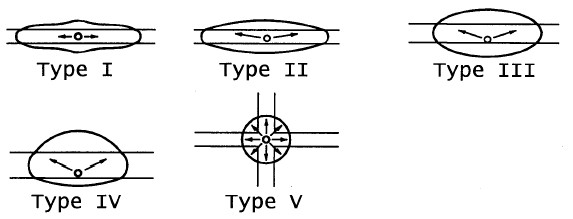A Closer Look at Light Distribution Patterns
Time:2016-01-19 Views:5124 Compile:SUNPER
Here is the crucial information that everyone need to know concerning the light distributions patterns. It is very simple, it is wish of everyone to have the right type of lighting and nothing else. It is also wish of all building owners to spend money on something that they will get good results. Thus, having knowledge of the technical aspects is very important as this may help you greatly in achieving your interests.
By going that way, no one can trick you into something else where you may end up spending money wrongly and thus you will not accomplish your objectives. When it comes to the outdoor lighting, it is vital to understand the whole concept behind the light distributions. If the light distribution is not correct, it can be changed without necessarily re-doing the whole project. It is important you do it correctly right from the time and you will get a better understanding of the light distribution patterns.
About the light distribution patterns
The outdoor luminaries usually produce patterns that can be easily identified by their reach in front of the single fixture location and secondly by their reach on sides of that location. The distribution types describe the reach of the luminaires light pattern of each fixture. The distribution ranges normally define the reach to either side.
Distribution Types
This term is used to define how far forward the luminaire can reach such on the street side. It is where the effective output can reach. The particular classification of the distribution types is basically about locating the luminaries’ effective major output pattern on the grid representing distances in MH from the luminaire. MH means Mounting Height.
The pattern is defined by finding the area representing the light duration at 50 percent maximum. The luminaire can also be classified by measuring where the bulk of the pattern falls on the grid as shown by the diagrams labelled Type I, Type II, Types III, Type IV and Type V. Prior proceeding to the description of each type, minor deviations in the beam pattern may be found to cross the boundary from one type to the other. This causes a nominal effect on the applied performance and thus it should be considered as for classification purposes.

Type I: This is the narrowest type of all the five. This pattern is best when suited to illuminating bike paths as well as narrow walkways. It is for fixtures that are placed either close or at the center of what you want to light up.
Type II: This defines the shallow reaches when a 50 percent maximum candela trace is within 1.75 mounting height on the street side.
Type III: It is a mid-range and lies within 2.75 mounting height on the street side.
Type IV: This identifies luminaries using a definite forward-throw distribution and lies beyond 2.75 mounting height on the street side.
Type V: This is distribution when 50 percent maximum candela trace is in four quadrants. This type is characterized by 4 candela peaks and diagonal of reference line.
Asymmetric 5,6 distribution is similar to type III. It is for the vertical lamp luminaires when 50 percent maximum candela trace is more than 1.0 MH. Symmetric 5,6 square distribution is similar to type V square. It is classified as symmetric for the vertical lamp luminaries if 50 percent maximum candela trace is symmetric in the 4 quadrants on both house and street side of the reference line. The narrow range distribution is usually identified if the peaks fall inside the side of 2.25 MH. Wide range is identified if the candela peaks fall more than 2.25 MH.
Recent Studies In US Proofing That Residents Still Need More Awareness On Energy Efficiency Educatio
Next:Easy Steps on How To Calculate Watts For Analyzing Energy Efficiency Projects
User comments
Your current input 0 characters(Reply for at least 6 characters)。
Online Services

Mobile: +86 18938902515 (Mr.Allen)
Tel:+86 755 23159099
Fax:+86 755 61673151
E-mail: sales@sunper.net
zip code: 518108











